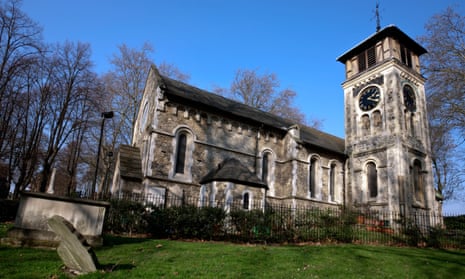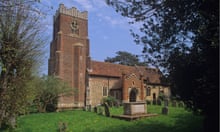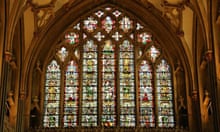England’s churches must become vibrant hubs at the centre of communities, offering local people a range of activities and services beyond a place to worship, if they are to be sustainable, according to an independent review.
Churches are “heritage assets”, but their care, maintenance and repair represents an enormous task, according to the Taylor review of the sustainability of English churches and cathedrals.
The report urges congregations to involve more local people to use and care for churches, citing examples where “enterprising clergy, PCCs [parish councils] and volunteers have developed their churches into vibrant hubs at the centre of their wider communities”.
Malmesbury Abbey in Wiltshire hosts events and concerts, runs a cafe and playgroup and transforms into a skate park every February half-term, the report says.
St Leonard’s in Yarpole, Herefordshire, can be hired for exercise classes and other events, and is creating a cafe, village shop and Post Office.
More than 200 churches have full or part-time shops, and more than 150 have Post Offices. According to a 2015 survey, 60% of churches held parent and toddler groups, and two-thirds host food banks.
The purpose of the review was to “consider how to ensure that the thousands of listed church buildings, many of which define our towns, cities and villages, are conserved for future generations”.
Three-quarters of the 16,000 C of E churches in England are listed. Nearly 45% of all grade-I listed buildings in England are parish churches.
The report says: “A common assumption, that [churches] are managed and maintained by well-resourced and endowed bodies, needs to be countered. In reality, for the majority of churches, the exact opposite is the case: local people bear the full responsibility for repair, maintenance and security.”
Declining congregations, a lack of expertise and scarcity of public money have inhibited the ability of local people to care for churches. Although the review panel considered all Church of England buildings “from the most magnificent cathedrals to the smallest parish churches … the need is greatest at the smaller end of the spectrum, amongst the buildings afforded the least attention and spending - parish churches.”
The report concludes that there is “no ‘one size fits all’ solution; every church and community will be different and local considerations will be paramount. However, new and different uses for buildings may need to be considered and new income streams developed to sit alongside the longstanding function of the building as a place for Christian worship.
“When a church building is widely used for a variety of purposes, a much wider cross-section of its community has a sense of commitment to its survival.”
Bernard Taylor, who led the review, said: “Church buildings are an important and a much-loved part of our national heritage and form an integral part of our sense of identity and community. However, despite the hard work of many groups and volunteers around the country, they face complex problems of maintenance and repair, and are not always well used and supported.”
“Increased use and helping communities in their broadest form to see the value and potential of the local church is the key to the church building becoming more self-sustaining and ultimately ensuring its long term survival.”
The review’s findings were welcomed by John Inge, the bishop of Worcester and the C of E’s lead bishop on church and cathedral buildings. “Our 16,000 churches are the jewel in the crown of our built heritage. They exist, as they always have done, to serve their communities. This is seen through daily acts of worship, celebrations of the joys of life and commemorations of its sorrows.
“They are, though, not just places of worship for their communities: they are social hubs for people of all ages, spaces to offer hospitality and vital services to the vulnerable; churches increasingly are the glue in community life.”








